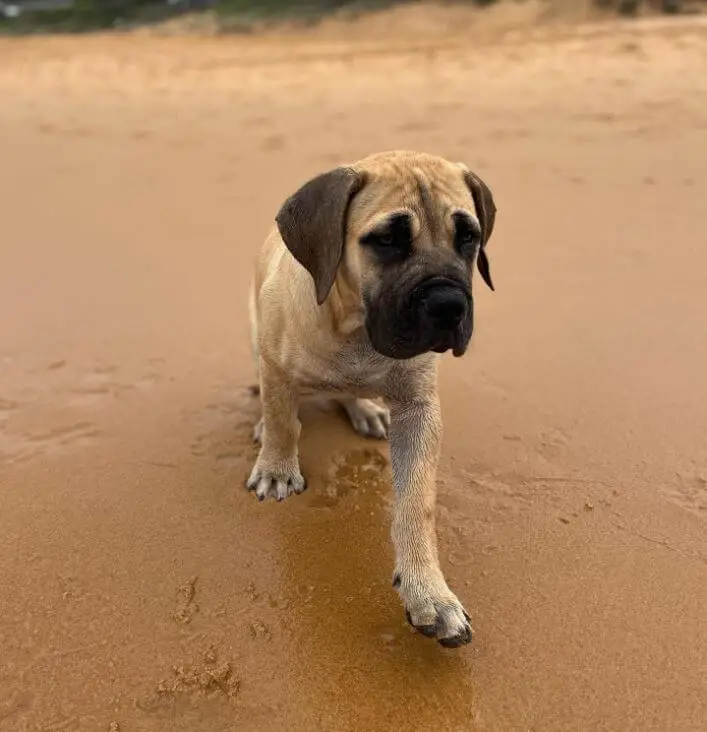Puppies are bundles of energy, and it’s important to provide them with regular exercise to keep them healthy and happy. However, as a responsible puppy owner, it’s crucial to understand that puppies have different exercise needs compared to adult dogs. Too much exercise can be detrimental to their developing bodies. In this article, we will delve into the topic of how much exercise is too much for puppies, providing you with guidelines to ensure their safety and well-being.

Understanding the Puppy’s Growth Stages:
Puppies go through several growth stages, and their exercise requirements change as they develop. It’s essential to consider their age, breed, and overall health when determining the appropriate amount of exercise. Here’s a breakdown of the growth stages:
1 – Early Development (Up to 3 Months):
During the first few months, puppies are still growing and developing their bones, joints, and muscles. Their exercise should mainly consist of short, low-impact activities such as gentle play, short walks, and supervised exploration in a safe and controlled environment.
2 – Rapid Growth (3 to 6 Months):
Between 3 to 6 months, puppies experience a significant growth spurt. However, their bones and joints are still developing and are susceptible to injury. Moderate exercise is recommended, including short walks, play sessions, and mentally stimulating activities. Avoid high-impact exercises, excessive jumping, and prolonged strenuous activities.
3 – Adolescence (6 to 18 Months):
During this stage, puppies continue to grow and gain strength. They can engage in more vigorous exercise but still require supervision and guidance. Longer walks, interactive games, and obedience training can help channel their energy. However, be cautious not to overexert them, as they are still maturing physically.

Signs of Overexertion:
It’s important to recognize signs of overexertion in puppies to prevent potential injuries or health issues. Watch out for the following signs that may indicate your puppy is getting too much exercise:
- Excessive Panting: If your puppy is panting heavily and struggling to catch their breath even after rest, it may be a sign of overexertion.
- Limping or Lameness: If your puppy starts limping or favoring a leg, it could indicate a strain, sprain, or other musculoskeletal issues resulting from excessive exercise.
- Reluctance to Move: If your puppy shows reluctance or hesitation to engage in physical activity, it may be a sign of fatigue or discomfort.
- Stiffness or Swelling: Swelling or stiffness in the joints or muscles can be a sign of overexertion or potential injury.

Exercise Guidelines for Puppies:
To ensure your puppy gets the right amount of exercise, consider the following guidelines:
- Consult with Your Veterinarian: Your veterinarian is the best resource to provide personalized advice based on your puppy’s specific needs, breed, and health condition.
- Gradual Increase: Gradually increase the duration and intensity of exercise as your puppy grows. Allow them to build strength and endurance gradually.
- Shorter Sessions: Instead of long periods of continuous exercise, break the sessions into shorter, frequent bursts throughout the day.
- Play and Mental Stimulation: Along with physical exercise, prioritize mental stimulation through puzzle toys, obedience training, and interactive play to keep your puppy engaged and entertained.
- Rest and Recovery: Puppies need plenty of rest and sleep to support their growth and development. Provide them with a comfortable and quiet space to relax and recover between exercise sessions.

Understanding how much exercise is too much for your puppy is essential for their proper growth and well-being. As a puppy owner, monitor their signs of fatigue and adjust their exercise routine accordingly. By following the guidelines based on their age, breed, and overall health, you can ensure that your puppy receives the right amount of exercise to stay healthy, happy, and free from the risks of overexertion. Remember, a balanced approach to exercise and rest will help your puppy thrive into a strong and active adult dog.
